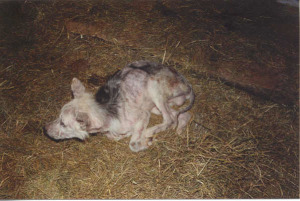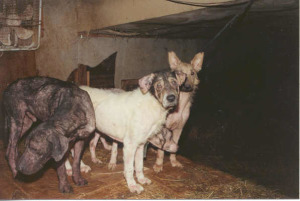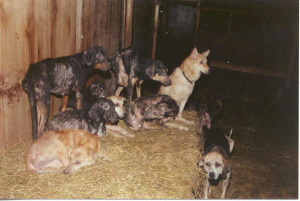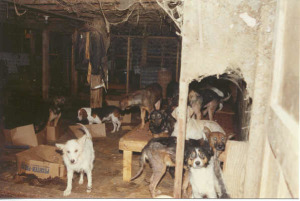A Hoarder By Any Other Name

In past issues we have discussed the concept of animal “hoarders” — individuals, who for various reasons, amass more animals than they can care for properly. Using various excuses, hoarders ensure that visitors do not see all the animals; instead, they are only allowed to see a few show-cased ones in a restricted area. When authorities responding to complaints investigate these facilities, they find animals living in overcrowded, unsanitary, and unhealthy conditions, and lacking adequate food, water, and veterinary care. Note: We want to make clear that there are many legitimate rescues, sanctuaries, shelters and other named entities that do an excellent job of assisting needy animals and who open their facilities for people to see the good work they are doing. Those are not the facilities we are referring to here.
Hoarders obtain animals from many different sources: for example, a hoarder may advertise the facility as a “rescue,” “sanctuary, ” or “shelter” and encourage people to bring animals there when other shelters turn them away. Animals also arrive from municipal shelters that allow rescue groups to remove those who are going to be humanely euthanized. These groups may then transport the animals to the facility of a hoarder, often not knowing the full extent of the poor conditions that exist there. And hoarders take the animals in, rarely turning any away, even if it means that the animal will be subjected to horrid living conditions and a cruel death. The hoarder always wants more animals.

The hoarder cases in which this organization has been engaged always involved large numbers of suffering animals. The only thing that brought them relief was seizure by law enforcement authorities and subsequent care by dedicated shelters and individuals. Only intervention and prosecution has stopped a hoarder; never would that person have stopped hoarding on his or her own. Unfortunately, hoarders are generally good at public relations and gain sympathy from trusting people even after an arrest. As the “Hoarding of Animals Research Consortium” website at Tufts University points out, “Experience has proved that the courts, the public, and the media have great difficulty distinguishing between legitimate operations where the needs of the animals come first and those which are smokescreens for institutional hoarding.”

Some hoarder-run entities now have added a new category to their title or list of so-called “services,” and that is “hospice.” Never has a bigger chill gone through the veins of those who have had the experience of dealing with hoarders. To think that in addition to all the unfortunate animals that already fall prey to them, hoarders are now reaching out like bizarre grim reapers for the elderly and enfeebled animals, or in some cases seriously ill younger animals — all of whom may be in pain or distress. Yet, these hoarders now advertise their “hospice” as some sort of magical nirvana alternative, offering false comfort to distraught people struggling with the emotional distress of humanely ending the lives of their beloved animals. The hoarders attempt to distract and dissuade these individuals from the reality and necessity for that final and difficult, but humane decision. Why? Because of a hoarder´s own inability to deal with that reality.

Actually, it is a travesty for these hoarder-run entities to call themselves “hospices.” In the human world, a hospice involves providing an end-of-life environment that includes caring people, family members if possible, and conforming to medical protocols. Pain-relieving medications are provided, special diets followed, and treatments administered under strict supervision. If an entity seeks to call itself a hospice for animals, it would need to conform to a similar set of standards, with care plans developed for each animal. And those plans would have to be reviewed and monitored by a veterinarian to ensure that animals were not in discomfort.
Those who love and care for their companion animals should not be fooled by the false promise an animal “hospice” offers as an alternative to one´s final responsibility: to provide a humane euthanasia while cradling the animal in loving arms. To seek or to be lured into an alternative to avoid the pain of that decision is to betray the trust of that beloved animal, something that animal would never ever do to us.
Does any agency in New York State scrutinize those facilities that purport to be animal “hospices” to ensure they are adhering to any such protocols or standards? No, there is no oversight. The grim reality of a hoarder “hospice” is that a once-beloved companion animal will be surrounded by strange dogs, cats, and other animals, usually in large numbers — many of whom are unable to control their bodily functions, while others hobble along on painful joints. In an ill, enfeebled, and sometimes blind state, the unfortunate companion animal will be forced to struggle and fight with these other desperate animals for a scant supply of food in a deafening din of barking and scuffling. And most likely, the companion animal will not receive any medical care or pain relieving medication. Also lacking is regard for emotional health, especially that of an animal, who at the end of life, has been torn from the family and home he or she has loved and is instead abandoned to die in such a place. Those who love and care for their companion animals should not be fooled by the false promise an animal “hospice” offers as an alternative to one´s final responsibility: to provide a humane euthanasia while cradling the animal in loving arms. To seek or to be lured into an alternative to avoid the pain of that decision is to betray the trust of that beloved animal, something that animal would never ever do to us.
New York State Humane Association Humane Review, Vol.XX, No.2, Winter 2006-2007.